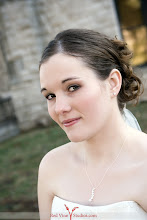After reading various blogs by my fellow classmates, I was immediately intrigued by Victoria’s interpretation of John Bray’s The Indian Princess. Not far into her blog she describes early American opera as “hokey.” Being an opera student myself, I decided to look further into this perception to see whether or not I agreed with it.
Upon listening to the same work, I quickly found myself bouncing to the tunes and even laughing a little at the lyrics. While some of the lyrics are silly or light-hearted at times, I would not use the word “hokey” to describe it. Perhaps the art of opera was a new venture for Bray, however I can easily see links to both European opera of Bray’s time and even to modern day musical theater. I do agree that the orchestra is second to the singers and is mainly there to offer support. However, this is not unusual of opera. The goal is to get the plot and lyrics across clearly. From Victoria’s perspective, playing in the pit would not be extremely entertaining. On the other hand, there are some really beautiful moments in the vocal score that are fun to listen to and I imagine would be fun to sing and act out as well.
Another feeling Victoria expresses is her disappointment in the absence of Native American culture and music within the piece. This I agree with, however only once in the entire work does a Native American actually sing, in this case Pocahontas. I admit that I was expecting at least a hint of tribal sound in her voice or in the accompaniment and it was not there. She sounds like she could have stepped off the boat with all of the Englishmen. She does have a “Snow White” quality to her voice, in which I can imagine her singing to the birds and the flowers much like I imagine an Indian princess doing. However, the lack of true Native American influence is disappointing. Nevertheless, the story that is conveyed through the music (disregarding the dialogue that is not included on the recording) is generally from the point of view of the English men and women rather than from the perspective of the Native Americans. I believe this helps us to understand the European influence on the music. In the song “Och! Hubbaboo!Gramachree!Hone,” Larry, a young man missing his love back home, sings with a strong Irish accent while the orchestra imitates bagpipes in a type of folk ballad. If we understand that this work is centered on the visitors to the New World rather than on the natives, it makes more sense that the music is European. That is what those characters would know and Bray conveys that well.
Another point that Victoria mentions is a baroque quality to the music. The music is rather light and simple, but I would say that this fits in well with the Classical period. Not only were composers trying to simplify music in order to bring out the melodies, composers of opera and song needed a way to better convey the text, following Gluck’s opera reform. While Bray does not completely eliminate ornamentation, he does make it minimal.
I agree that The Indian Princess is not an extremely influential work today nor should it be considered a part of the canon. However, I think Bray deserves some credit as his work was widely performed during his lifetime throughout America and even in London. He obviously created something worth looking at and he knew how to reach his audience. I can easily imagine this story translating into a modern day musical and perhaps one day a composer will take that chance.
Subscribe to:
Post Comments (Atom)

No comments:
Post a Comment